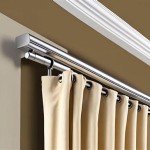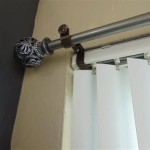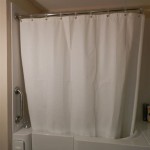Pottery Barn Sliding Door Curtains: Functionality and Style for Large Openings
Sliding glass doors represent a common architectural feature in modern homes, providing abundant natural light and seamless transitions between indoor and outdoor spaces. However, these large expanses of glass can also present challenges in terms of privacy, light control, insulation, and overall aesthetics. Pottery Barn sliding door curtains offer a potential solution to these challenges, combining functionality with the brand's signature design aesthetic. These curtains are specifically designed to address the unique requirements of sliding doors, differentiating them from standard window treatments.
This article will provide a comprehensive overview of Pottery Barn sliding door curtains, exploring their key features, benefits, design considerations, and installation aspects. The focus will be on presenting factual information and objective analysis to assist homeowners in making informed decisions regarding their window treatment options for sliding glass doors.
Key Features and Benefits of Pottery Barn Sliding Door Curtains
Pottery Barn's offerings in this category are characterized by several features designed to enhance the functionality and aesthetic appeal of sliding door applications. Understanding these features is crucial for evaluating their suitability for specific needs and preferences.
Material Selection: A hallmark of Pottery Barn products is the emphasis on quality materials. Sliding door curtains are available in a range of fabrics, including cotton, linen, blends of these natural fibers, and sometimes synthetic options like polyester. The choice of material directly impacts the curtain's light-filtering capabilities, durability, and overall drape. Linen, for instance, provides a casual, textured look and allows for diffused light, while heavier cotton blends offer more substantial light blockage and improved insulation. The material's weight also affects how the curtain hangs and moves along the track.
Construction and Design: Pottery Barn's sliding door curtains are typically constructed with features that promote ease of use and durability. Reinforced headers contribute to the curtain's structural integrity and prevent sagging over time. Many options feature grommets or rings, which allow for smooth gliding along the curtain rod or track. Panel widths are specifically designed to accommodate the size of sliding doors, ensuring adequate coverage and minimal light gaps. Design options range from solid colors and subtle textures to intricate patterns and prints, catering to diverse decorating styles.
Light Control and Privacy: One of the primary benefits of using curtains on sliding doors is the ability to control the amount of light entering the room. Sheer curtains provide minimal light blockage and offer a degree of privacy while maintaining a bright, airy feel. Blackout curtains, on the other hand, are designed to block out virtually all light, ideal for bedrooms or media rooms where darkness is desired. Intermediate options, such as room-darkening curtains, strike a balance between light control and natural illumination. Privacy levels vary depending on the fabric's opacity and weave density.
Insulation and Energy Efficiency: Sliding glass doors can be a significant source of heat loss in the winter and heat gain in the summer, impacting energy efficiency and comfort levels. Pottery Barn offers insulated sliding door curtains designed to mitigate these effects. These curtains typically feature multiple layers of fabric, including a thermal lining, to create a barrier against temperature fluctuations. By reducing heat transfer, insulated curtains can help lower energy bills and maintain a more consistent room temperature.
Aesthetic Versatility: Beyond their functional benefits, Pottery Barn sliding door curtains contribute to the overall aesthetic of the space. The wide range of styles, colors, and patterns allows homeowners to personalize their window treatments to complement their existing décor. Curtains can add a touch of elegance, sophistication, or casual comfort to the room, depending on the chosen design. They can also be used to create visual interest and define different areas within an open-concept space.
Design Considerations for Selecting Sliding Door Curtains
Choosing the right sliding door curtains involves careful consideration of several factors to ensure optimal functionality and aesthetic harmony. These considerations go beyond simply selecting a preferred color or pattern.
Door Dimensions and Coverage: Accurate measurements of the sliding door opening are crucial for determining the appropriate curtain panel size. The width of the curtain panels should be sufficient to provide adequate coverage when the curtains are closed, minimizing light gaps. Consider adding extra width for fullness and a more luxurious drape. The length of the curtains should also be carefully considered, with options ranging from floor-length to puddle-length. Floor-length curtains create a clean, streamlined look, while puddle-length curtains add a touch of drama.
Header Style and Hardware: The header style of the curtains (e.g., grommets, rod pocket, pinch pleat) influences the way the curtains hang and the type of hardware required. Grommet-top curtains offer a modern, contemporary look and glide smoothly along the rod. Rod pocket curtains create a more traditional, gathered appearance. Pinch pleat curtains provide a tailored, formal look and require specialized hooks and tracks. The choice of hardware, including the curtain rod or track, should complement the header style and the overall aesthetic of the room. The rod or track should be sturdy enough to support the weight of the curtains and long enough to allow the curtains to be fully opened without obstructing the door opening.
Fabric Weight and Drape: The weight of the fabric affects how the curtains hang and move. Heavier fabrics, such as velvet or thick cotton blends, tend to drape more formally and provide better insulation and light blockage. Lighter fabrics, such as linen or voile, offer a more casual, airy feel. Consider the desired level of formality and the functional requirements when selecting the fabric weight. The drape of the fabric also influences the overall aesthetic. Fabrics with a good drape flow gracefully and create a visually appealing effect.
Color and Pattern Coordination: The color and pattern of the curtains should complement the existing décor of the room. Consider the color palette of the walls, furniture, and accessories when making a selection. Neutral colors, such as white, gray, or beige, offer versatility and can easily be incorporated into various design schemes. Bold colors or patterns can add a pop of visual interest and create a focal point in the room. Ensure that the chosen pattern does not clash with other patterns in the space. Consider the scale of the pattern in relation to the size of the room and the sliding door opening.
Maintenance and Durability: The ease of maintenance and the durability of the curtains are important considerations, especially in high-traffic areas. Consider the fabric's resistance to fading, staining, and wrinkling. Some fabrics require professional cleaning, while others can be machine washed. Choose fabrics that are durable and can withstand regular use. Consider the presence of pets or children when making a selection, as certain fabrics may be more prone to damage or staining.
Installation and Care of Pottery Barn Sliding Door Curtains
Proper installation and care are essential for ensuring the longevity and optimal performance of Pottery Barn sliding door curtains. Following the manufacturer's instructions and adopting appropriate maintenance practices will help preserve their appearance and functionality.
Hardware Installation: The installation process begins with the proper mounting of the curtain rod or track. Ensure that the hardware is securely attached to the wall or ceiling, using appropriate anchors for the specific wall type. The height of the rod or track should be determined based on the desired length of the curtains and the header style. Follow the manufacturer's instructions for spacing and leveling the hardware. Consider using a stud finder to locate wall studs for added support. For heavier curtains, it may be necessary to use additional support brackets to prevent sagging.
Curtain Hanging and Adjustment: Once the hardware is installed, the curtains can be hung. Follow the manufacturer's instructions for attaching the curtains to the rod or track, using the appropriate hooks, rings, or grommets. Ensure that the curtains are evenly distributed along the rod or track and that they hang straight. Adjust the length of the curtains, if necessary, to achieve the desired look. Some curtains may require hemming to achieve the perfect length. Consider using adjustable curtain rods or tracks to allow for flexibility in adjusting the height of the curtains.
Cleaning and Maintenance: Regular cleaning and maintenance are essential for preserving the appearance and functionality of the curtains. Follow the manufacturer's instructions for cleaning the specific fabric type. Some curtains can be machine washed, while others require professional cleaning. Vacuum the curtains regularly to remove dust and debris. Spot clean any stains or spills immediately to prevent them from setting. Avoid exposing the curtains to direct sunlight for extended periods, as this can cause fading. Rotate the curtains periodically to ensure even wear and fading. Consider using a fabric protectant spray to help repel stains and dirt.
Troubleshooting Common Issues: Over time, some common issues may arise with sliding door curtains, such as sagging, sticking, or damage. Sagging can be addressed by tightening the hardware or adding additional support brackets. Sticking can be resolved by lubricating the curtain rod or track with a silicone-based lubricant. Damage, such as tears or rips, may require professional repair. Regular inspection and maintenance can help prevent these issues from occurring in the first place.
By carefully considering the features, design, installation, and care aspects of Pottery Barn sliding door curtains, homeowners can make informed decisions to enhance the functionality, aesthetics, and energy efficiency of their sliding glass doors.

Premium Outdoor Curtains Drapes Pottery Barn

Emery Linen Curtain 100 X 96 White Pottery Barn

Emery Linen Sheer Curtain

Riviera Striped Linen Cotton Curtain 50 X 96 Navy Pottery Barn

Pottery Barn Translations

Custom Seaton Textured Cotton Curtain Oatmeal 42 W X 88 L Pottery Barn

Cynthia Palampore Printed Curtain 50 X 96 Multi Pottery Barn

Window Treatments Pottery Barn

Whisper Sheer Curtain 50 X 84 White Pottery Barn

Custom Belgian Flax Linen Blackout Curtain Dark 36 W X 176 L Pottery Barn








